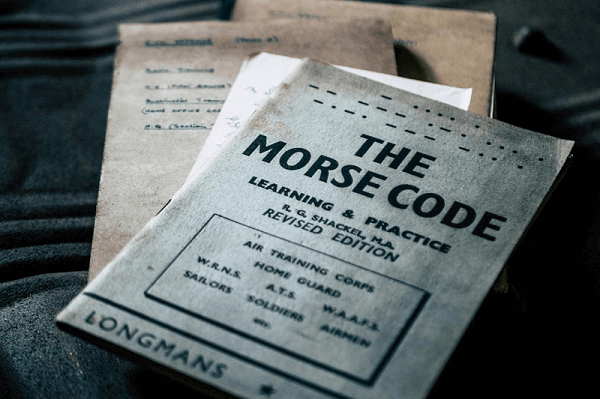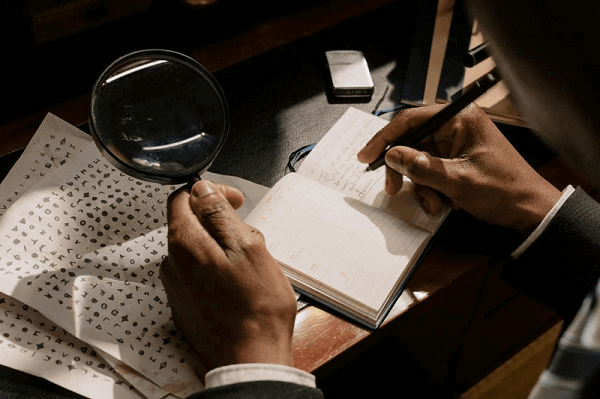How to Use Our Morse Code Translator?
- Input Your Text or Morse Code: Type your text or Morse code, or upload your file into the box.
- Convert: Our Morse code translator works in real time, detecting and translating your input as you enter it. The tool interprets sequences of dots and dashes, translating them into readable English, or converts text into Morse code symbols.
- Use the Audio Feature: There are several buttons for you, including options to play audio for auditory learning and verification, copy the output, and more.
Features of Morse Code Translator
This Morse code converter processes enable seamless communication, bridging traditional Morse code with modern digital tools for enhanced convenience and efficiency.
What is Morse Code?
Morse code is a communication method that encodes text, numbers, and symbols into sequences of dots (short signals, “·”) and dashes (long signals, “−”). Each character or symbol is represented by a unique combination of dots and dashes. It was widely used in telecommunication, especially in telegraphy and radio communication.
This morse code system of communication was developed in the 1830s by Samuel Morse and Alfred Vail for telegraph systems. The transmission of Morse code relies on precise timing: a dot lasts for one time unit, a dash lasts for three time units, spaces between characters are three units, and spaces between words are seven units. It can be transmitted through sound, light, or visual signals, making it versatile for various communication scenarios.
Examples of its use include telegraphy, aviation navigation, amateur radio, and emergency signaling, such as the universally recognized distress signal “SOS” (… — …). Despite being an old system, Morse code remains valuable in specific fields due to its simplicity and efficiency.
How Does the Morse Code Translator Work?
This Morse code translator works by converting text or letter, number, Alphabet
into Morse code (dots and dashes) or vice versa. Here’s a step-by-step explanation of how it functions:
1. Understanding Morse Code Basics
Morse Code is a system of communication using dots (.), dashes (-), and spaces to represent letters, numbers, and special characters.
Each letter, number, or symbol has a specific sequence of dots and dashes. For example:
- A: .-
- B: -…
- 1: .—-
2. Input Data
Text-to-Morse: The user inputs plain text (e.g., “SOS”).
Morse-to-Text: The user inputs a Morse code sequence (e.g., … — …).
Morse Code Usages
Originally developed for telegraphy, Morse code remains an important skill for hobbyists, emergency responders, and history enthusiasts. With a Text-to-Morse Code tool, users can quickly encode messages into Morse code for educational purposes, creative projects, or practical applications.

Learning
Morse code enhances learning by promoting pattern recognition, memory, and focused listening. It engages students with hands-on activities, teaching not only communication but also problem-solving and critical thinking. Learning Morse code encourages an understanding of historical methods of encoding and decoding messages.

Communication
Morse code is vital in communication, especially during emergencies when other systems fail. It enables efficient transmission through sound, light, or tactile signals. It also serves as an accessible method for individuals with hearing or speech impairments, ensuring effective communication in various scenarios.

Decoding
Decoding Morse code sharpens analytical and cognitive skills. By translating dots and dashes into meaningful text, individuals practice attention to detail and logical reasoning. This process fosters mental agility, making it an excellent tool for improving memory retention and enhancing problem-solving abilities.

Art and Fashion
Morse code has found its way into art and fashion, with designers incorporating the code into jewelry, clothing, and accessories. Hidden messages or symbolic elements are often used to convey personal or artistic meanings. This fusion of history and modern style appeals to both design and technology enthusiasts.
Why Use Our Morse Code Translator Online?
Morse Code Letter Translator
Here are the Morse code representations for the letters of the alphabet:
| A | .- | K | -.- | U | ..- |
| B | -.. | L | .-.. | V | …- |
| C | -.-. | M | — | W | .– |
| D | -.. | N | -. | X | -..- |
| E | . | O | — | Y | -.– |
| F | ..-. | P | .–. | Z | –.. |
| G | –. | Q | –.- | ||
| H | …. | R | .-. | ||
| I | .. | S | … | ||
| J | .— | T | — |
Understanding Morse Code in Light and Audio
Morse code uses patterns of dots (short signals) and dashes (long signals) in light or audio. In light, dots are brief flashes, and dashes are longer ones. In audio, dots are short beeps, and dashes are longer, with pauses separating characters and words. Use the translator’s audio feature to get accustomed to the rhythm and timing of the signals. This method ensures clear communication over distances, even in low visibility or without speech.
How Can I Learn Morse Code?
To learn Morse code, follow these steps:
- Start with the Basics: Familiarize yourself with the Morse code alphabet and numbers. Practice memorizing the symbols for letters and numbers.
- Use Flashcards: Create flashcards with letters and their corresponding Morse code to help reinforce memory.
- Practice Listening: Listen to Morse code transmissions or use apps that teach you to recognize dots and dashes by sound.
- Write It Down: Practice writing Morse code by hand or on a computer to get comfortable with translating it to and from text.
- Use Online Tools: There are many online Morse code translators and apps that can help you practice both translating and encoding messages.
- Practice Regularly: Like any new language or skill, consistent practice is essential. Start with simple messages and gradually work your way up to more complex ones.
- Join a Community: Engage with groups or forums of people learning Morse code, where you can exchange tips and practice together.
Common Mistakes in Morse Code Translation
Common mistakes in Morse code translation include:
- Timing Errors: Incorrect timing of dots, dashes, or spaces between characters can lead to misinterpretation. Dashes may be mistaken for dots, or characters may run together without proper spacing.
- Misinterpreting Similar Signals: Some letters have similar Morse code sequences (e.g., “N” and “M”), leading to confusion if not read carefully.
- Overlooking Gaps: Failing to pause correctly between words or characters can result in words being merged together or characters being skipped.
- Wrong Letter/Character Substitution: A quick mistake in recognizing dots and dashes can lead to incorrect translations of letters or numbers.
- Inconsistent Sound or Light Signals: Variations in signal length or clarity can confuse the listener or viewer, especially if the equipment isn’t properly calibrated.
Correct practice and attention to timing are key to avoiding these errors in Morse code translation.
Frequently Asked Questions (FAQs)
What is Morse Code Used For?
Morse code serves as a reliable method for distant communication, crucial for distress signals like SOS and widely utilized in areas such as aviation, shipping, and hobby radio. It’s also an enjoyable way to exchange private messages with friends and an essential tool in situations where standard communication methods fail.
Is It Difficult to Learn Morse Code?
Learning Morse code can be challenging at first, as it requires memorizing a series of dots and dashes for each letter, number, and symbol. However, with practice and the use of mnemonic techniques, it becomes easier over time. Many people start by learning a few letters at a time and gradually build their skills. With patience and consistent practice, most people can become proficient in Morse code.